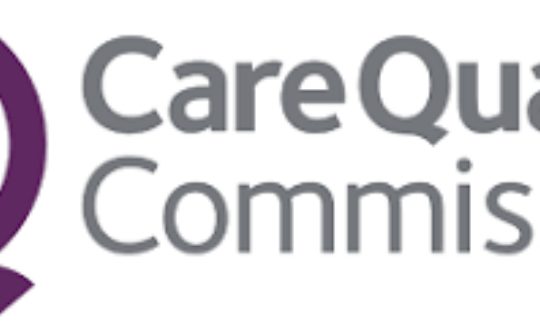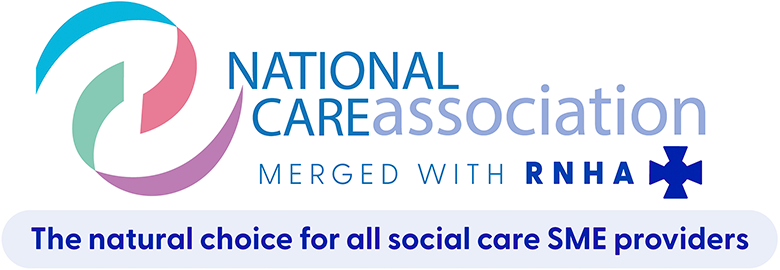10th October 2017
State of Sector Report from Care Quality Commission

Most people still getting good care – but health and care system is ‘straining at the seams’, making future quality precarious
This year’s State of Care shows that, thanks to the efforts of staff and leaders, the quality of health and social care has been maintained despite very real challenges and the majority of people are getting good, safe care. But future quality is precarious as the system struggles with complex new types of demand, access and cost.
The Care Quality Commission’s (CQC) annual assessment of the quality of health and social care in England contains much that is encouraging. As at 31 July 2017, 78% of adult social care services were rated good (71% were rated good at 31 July 2016) as were 55% of NHS acute hospital core services (2016: 51%); 68% of NHS mental health core services (2016: 61%) and 89% of GP practices (2016: 83%).
From this analysis, it is clear that the quality of care has been maintained. Two percent of adult social care services, 6% of NHS acute hospital and mental health core services, and 4% of GP practices are rated outstanding. Many services that were originally rated as inadequate have used the findings of CQC’s inspection reports to make the necessary changes and have improved.
However, the changing nature of demand – increasingly numbers of older people who are physically frail, many with dementia, more people with long term complex conditions – is placing unprecedented pressure on the system. In acute hospitals, this means more people waiting over four hours at A&E; more planned operations cancelled, and people waiting longer for treatment. And in adult social care, the number of beds in nursing homes has decreased across most of England and domiciliary care contracts are being handed back to councils because providers say the funding is insufficient to meet people’s needs; estimates show that one in eight older people are not receiving the help they need.
A very small minority of care was found to be failing people – between 1% and 3% of providers across the services CQC regulates were rated inadequate. There is also much care that needs to improve: 19% (2016: 26%) of adult social care services; 37% (2016: 39%) of NHS acute core services; 24% (2016: 33%) of NHS mental health core services; and 6% (2016: 10%) of GP practices were rated as requires improvement.
Sir David Behan, Chief Executive of CQC, said:
“The fact that the quality of care has been maintained in the toughest climate that most can remember is testament to the efforts of frontline staff, managers and leaders. Many providers have used our inspection reports to improve, and we have seen improvements in safety in particular, although this area remains a big concern and focus for us. However, as people’s health and care needs change and become more complex, a model of care designed for the 20thcentury is at full stretch and struggling to cope with 21st century problems.
“The impact of this on people is particularly evident where sectors come together – or fail to come together, as the complex patchwork of health and social care strains at the seams.
In children and young people’s mental health services, for example, a system where care is planned, funded, commissioned and provided by different organisations can result a child’s mental health reaching crisis point before they get the help they need. The forthcoming green paper on child and adolescent mental health and the Mental Health Act review provide an opportunity to address this acknowledged problem.
“Last year, CQC warned that social care was ‘approaching tipping point’ – a point where deterioration in quality would outpace improvement and there would be a significant increase in people whose needs weren’t being met. We said this based on five pieces of evidence – on bed numbers, market fragility, unmet need and local authority funding and quality. This year, nursing home bed numbers are down, more contracts have been handed back and Age UK estimates that there is more unmet need. Helpfully, however, an extra £2bn has been made available through the Better Care Fund - and improvement in quality continues to outpace deterioration, although the rate of improvement has slowed.
“The future of the social care system is one of the greatest unresolved public policy issues of our time – a long term sustainable solution is urgently required. The anticipated green paper on adult social care will provide the opportunity for Parliament, the public and professionals to consider how we can collectively develop an appropriately funded social care system that can meet people’s needs, now and in the future.
“If services are to deliver consistently for people, there must be better coordination of care to create a sustainable and effective health and care system. Staff and leaders can’t work any harder; the answer must be to work more collaboratively, not just between sectors but between agencies and professionals, supported and incentivised by the national health and care organisations. People should be able to expect consistent, personalised, safe care, and to be able to access that care when they need it – whether that’s delivered in an acute hospital, a nursing home, a community mental health hospital, a GP surgery or in their own home.”
Peter Wyman, Chair of CQC, said:
“Having now completed our first full round of inspections with ratings for all the services we regulate, we have a unique baseline from which to draw conclusions about quality and safety of care and what influences this. Throughout this year, as well as reporting on the quality of care in the sectors we regulate, we have shared examples of improvement in different parts of the system, identifying common factors among providers that have improved.
“We often see personalised care at its best where there is strong leadership and a positive culture, and we have pointed to where a shared vision and outward looking approach have been central to improvement – and to where providers have reached out to local communities and partners, involving patient and the public in shaping services, and collaborating with local groups. I have visited many providers myself over the course of the year and have been frequently impressed, not just by their hard work and commitment, but by their vision and innovation. We have seen examples of services working together – often harnessing new innovations and technology, including collaborating to share data – to transform care around people’s needs, with positive results on outcomes, access and people’s experience.
“CQC will encourage the move towards coordinated care by increasingly reporting not just on the quality of care of individual providers but on the quality of care across areas and coordination between these areas. This must be future direction for creating a more sustainable and effective health and care system for the third decade of the 21st century.”
This year’s analysis found that 82% of adult social care services originally rated as inadequate and re-inspected (606 out of 740) improved their rating, 12 out of the 15 hospitals originally rated as inadequate and re-inspected improved, all of the nine mental health services (NHS trusts or independent hospitals) originally rated as inadequate and re-inspected improved their rating and 80% of GP practices originally rated as inadequate and re-inspected (156 out of 196) improved.
While recognising improvements, there is also deterioration that must be addressed. Looking at providers rated good overall the first time CQC inspected, the majority have remained good. But of the services that were re-inspected, 26% of mental health services and 23% of adult social care services originally rated good dropped at least one rating. Also, two out of the 11 NHS acute hospitals that we re-inspected had deteriorated, and only 2% of re-inspected GP practices deteriorated
Since CQC introduced its new approach to inspection and rating, there has been a clear improvement overall in safety across all of the sectors regulated and rated. Where CQC has seen improvements, providers have good monitoring that gives staff a clear, accurate and current picture, which allows risk to be assessed in real time, clear systems and governance in place, which enable learning from incidents and a positive culture where staff are encouraged to raise concerns.
Despite this progress, there remain many opportunities for further improvement and many providers could and should do more; safety remains CQC’s key focus and biggest concern across all sectors. As at 31 July 2017, 5% (31 July 2016: 6%) of acute hospital core services were rated as inadequate for safety, as were 3% (2016: 7%) of core services in NHS mental health trusts, 2% (2016: 3%) of adult social care services and 2% (2016: 2%) of GP practices. CQC will use a targeted approach to work with these providers in order to drive improvement, and to take action to protect people where necessary.

















